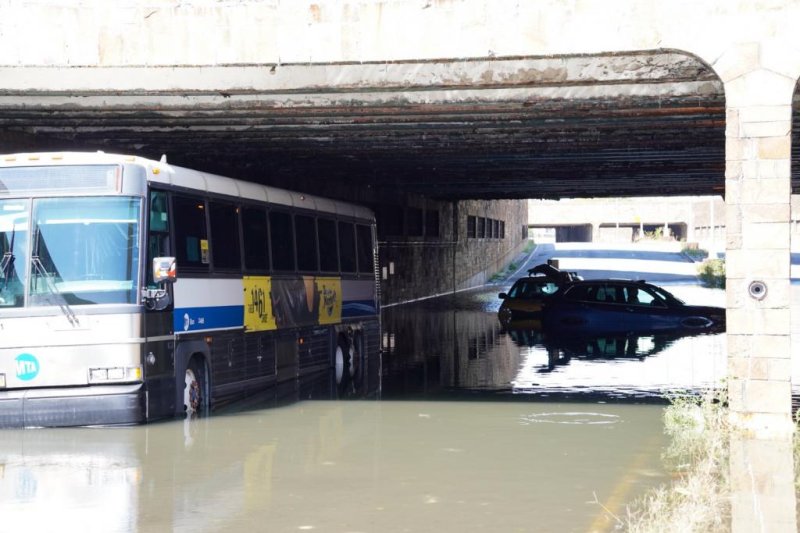Issued on: 08/09/2021 -

An altar with candles and flowers is seen near the section of an elevated track that collapsed bringing a train crashing down on May 3 in Mexico City
Alfredo ESTRELLA AFP
Mexico City (AFP)
An investigation into the Mexico City metro disaster that left 26 people dead concluded Tuesday that the buckling of beams and problems with bolts caused the elevated track to collapse.
The accident, in which an overpass gave way on May 3, bringing a passenger train crashing down, has prompted angry demands for justice from relatives of the victims.
Norwegian engineering company DNV, which was hired by the authorities to investigate the causes, blamed the crash on a structural failure in an initial report published in June.
In its final technical report released Tuesday, the firm said the collapse "occurred as a result of buckling of the north and south beams" and inadequate bolts that "caused part of the elevated section to lose its composite structure."
This led to cracks "that further reduced the structure's ability to carry the load," it added.
The investigation identified poorly welded, missing and misplaced bolts.
Possible reasons for the collapse of the beams include mechanical and design deficiencies, according to the report.
The metro line, the city's newest, has been plagued by problems since it was opened in 2012.
An independent report with analysis of the root causes of the accident will be released at some point in the future, said Mexico City works chief Jesus Esteva.
The fallout of the crash has engulfed two of President Andres Manuel Lopez Obrador's close political allies -- Mexico City Mayor Claudia Sheinbaum and one of her predecessors, Foreign Minister Marcelo Ebrard.
Mexican billionaire Carlos Slim, one of the world's richest men, also faces scrutiny over the disaster as one of his companies was involved in the construction of the section that collapsed.
Slim has agreed to pay for its reconstruction, according to Lopez Obrador, but rejected suggestions that the line had flaws in its original construction.
© 2021 AFP
Mexico City (AFP)
An investigation into the Mexico City metro disaster that left 26 people dead concluded Tuesday that the buckling of beams and problems with bolts caused the elevated track to collapse.
The accident, in which an overpass gave way on May 3, bringing a passenger train crashing down, has prompted angry demands for justice from relatives of the victims.
Norwegian engineering company DNV, which was hired by the authorities to investigate the causes, blamed the crash on a structural failure in an initial report published in June.
In its final technical report released Tuesday, the firm said the collapse "occurred as a result of buckling of the north and south beams" and inadequate bolts that "caused part of the elevated section to lose its composite structure."
This led to cracks "that further reduced the structure's ability to carry the load," it added.
The investigation identified poorly welded, missing and misplaced bolts.
Possible reasons for the collapse of the beams include mechanical and design deficiencies, according to the report.
The metro line, the city's newest, has been plagued by problems since it was opened in 2012.
An independent report with analysis of the root causes of the accident will be released at some point in the future, said Mexico City works chief Jesus Esteva.
The fallout of the crash has engulfed two of President Andres Manuel Lopez Obrador's close political allies -- Mexico City Mayor Claudia Sheinbaum and one of her predecessors, Foreign Minister Marcelo Ebrard.
Mexican billionaire Carlos Slim, one of the world's richest men, also faces scrutiny over the disaster as one of his companies was involved in the construction of the section that collapsed.
Slim has agreed to pay for its reconstruction, according to Lopez Obrador, but rejected suggestions that the line had flaws in its original construction.
© 2021 AFP
































